
Lab Materials
High Purity Zinc Oxide (ZnO) Sputtering Target / Powder / Wire / Block / Granule
Item Number : LM-ZnO
Price varies based on specs and customizations
- Chemical Formula
- ZnO
- Purity
- 4N
- Shape
- discs / wire / block / powder / plates / column targets / step target / custom-made

Shipping:
Contact us to get shipping details Enjoy On-time Dispatch Guarantee.
At reasonable prices, we offer Zinc Oxide (ZnO) materials specifically designed for laboratory use. Our expertise lies in producing and customizing Zinc Oxide (ZnO) materials of various purities, shapes, and sizes to meet your individual requirements.
Our selection of sputtering targets includes circular, square, tubular, and irregular shapes, as well as coating materials, cylinders, cones, particles, foils, powders, 3D printing powders, nanometer powders, wire rods, ingots, and blocks, among other options. We provide a variety of specifications and sizes to ensure that you find the perfect fit for your needs.
Details





About Zinc Oxide (ZnO)
Zinc Oxide is a highly insoluble and thermally stable Zinc source, widely used in glass, optic, and ceramic applications. It is a white powder that is insoluble in water and can be found naturally in the mineral zincite, but most commercially used zinc oxide is synthetic.
Oxide compounds, in general, are not conductive to electricity. However, certain perovskite structured oxides are electronically conductive. High Purity (99.999%) Zinc Oxide (ZnO) Powder, for instance, finds application in the cathode of solid oxide fuel cells and oxygen generation systems. Metal oxide compounds, including Zinc Oxide, are basic anhydrides, and can therefore react with acids and strong reducing agents in redox reactions.
Despite being insoluble in aqueous solutions (water), oxide compounds are extremely stable, making them useful in ceramic structures, from producing clay bowls to advanced electronics and in lightweight structural components in aerospace and electrochemical applications, such as fuel cells, in which they exhibit ionic conductivity.
Zinc Oxide is also available in various forms, including pellets, pieces, powder, sputtering targets, tablets, and nanopowder. High purity, submicron, and nanopowder forms are available, and typical and custom packaging options are offered. For additional research, technical, and safety (MSDS) data, please contact us for information on lead time and pricing.
Ingredient Quality Control
- Raw material composition analysis
- Through the use of equipment such as ICP and GDMS, the content of metal impurities is detected and analyzed to ensure that it meets the purity standard;
Non-metallic impurities are detected by equipment such as carbon and sulfur analyzers, nitrogen and oxygen analyzers. - Metallographic flaw detection analysis
- The target material is inspected using flaw detection equipment to ensure that there are no defects or shrinkage holes inside the product;
Through metallographic testing, the internal grain structure of the target material is analyzed to ensure that the grains are fine and dense. - Appearance and dimension inspection
- Product dimensions are measured using micrometers and precision calipers to ensure compliance with drawings;
The surface finish and cleanliness of the product are measured using a surface cleanliness meter.
Conventional Sputtering Target Sizes
- Preparation process
- hot isostatic pressing, vacuum melting, etc.
- Sputtering target shape
- plane sputtering target, multi-arc sputtering target, step sputtering target, special-shaped sputtering target
- Round sputtering target size
- Diameter: 25.4mm / 50mm / 50.8mm / 60mm / 76.2mm / 80mm / 100mm / 101.6mm / 152.4mm
Thickness: 3mm / 4mm / 5mm / 6mm / 6.35mm
Size can be customized. - Square sputtering target size
- 50×50×3mm / 100×100×4mm / 300×300×5mm, size can be customized
Available Metal Forms
Metal Forms Details
We manufacture almost all the metals listed on the periodic table in a wide range of forms and purities, as well as standard sizes and dimensions. We can also produce custom-made products to meet specific customer requirements, such as size, shape, surface area, composition, and more. The following list provides a sample of the forms we offer, but it is not exhaustive. If you need laboratory consumables, please contact us directly to request a quote.
- Flat/Planar Forms: Board, Film, Foil, Microfoil, Microleaf, Paper, Plate, Ribbon, Sheet, Strip, Tape, Wafer
- Preformed Shapes: Anodes, Balls, Bands, Bars, Boats, Bolts, Briquettes, Cathodes, Circles, Coils, Crucibles, Crystals, Cubes, Cups, Cylinders, Discs, Electrodes, Fibers, Filaments, Flanges, Grids, Lenses, Mandrels, Nuts, Parts, Prisms, Pucks, Rings, Rods, Shapes, Shields, Sleeves, Springs, Squares, Sputtering Targets, Sticks, Tubes, Washers, Windows, Wires
- Microsizes: Beads, Bits, Capsules, Chips, Coins, Dust, Flakes, Grains, Granules, Micropowder, Needles, Particles, Pebbles, Pellets, Pins, Pills, Powder, Shavings, Shot, Slugs, Spheres, Tablets
- Macrosizes: Billets, Chunks, Cuttings, Fragments, Ingots, Lumps, Nuggets, Pieces, Punchings, Rocks, Scraps, Segments, Turnings
- Porous and Semi-Porous: Fabric, Foam, Gauze, Honeycomb, Mesh, Sponge, Wool
- Nanoscale: Nanoparticles, Nanopowders, Nanofoils, Nanotubes, Nanorods, Nanoprisms
- Others: Concentrate, Ink, Paste, Precipitate, Residue, Samples, Specimens
KinTek specializes in the manufacturing of high-purity and ultra-high-purity materials with a purity range of 99.999% (5N), 99.9999% (6N), 99.99995% (6N5), and in some cases, up to 99.99999% (7N). Our materials are available in specific grades, including UP/UHP, semiconductor, electronic, deposition, fiber optic, and MBE grades. Our high-purity metals, oxides, and compounds are specifically crafted to meet the rigorous demands of high-technology applications and are ideal for use as dopants and precursor materials for thin film deposition, crystal growth of semiconductors, and synthesis of nanomaterials. These materials find use in advanced microelectronics, solar cells, fuel cells, optical materials, and other cutting-edge applications.
Packaging
We use vacuum packaging for our high-purity materials, and each material has specific packaging tailored to its unique characteristics. For instance, our Hf sputter target is externally tagged and labeled to facilitate efficient identification and quality control. We take great care to prevent any damage that could occur during storage or transportation.
4.8
out of
5
KINTEK's Zinc Oxide (ZnO) materials are of exceptional quality and purity, making them ideal for laboratory research. I highly recommend their products for anyone looking for reliable and consistent results.
4.9
out of
5
The customer service at KINTEK is outstanding. They go above and beyond to ensure that their customers are satisfied with their products and services. I have been consistently impressed with their dedication to excellence.
4.7
out of
5
I have been using KINTEK's Zinc Oxide (ZnO) sputtering targets for several years now and have always been impressed with their performance. They provide excellent results and are very durable, which saves me time and money in the long run.
5.0
out of
5
KINTEK's Zinc Oxide (ZnO) materials are a great value for the price. They are competitively priced and offer excellent quality and performance. I highly recommend them to any laboratory manager looking for a cost-effective solution.
4.6
out of
5
KINTEK's Zinc Oxide (ZnO) materials are technologically advanced and provide state-of-the-art performance. They are constantly innovating and improving their products, which gives me confidence that I am using the best possible materials for my research.
4.8
out of
5
The delivery of KINTEK's Zinc Oxide (ZnO) materials is always fast and reliable. I have never had any issues with receiving my orders on time, which is crucial for my research work.
4.9
out of
5
KINTEK's Zinc Oxide (ZnO) materials are extremely durable and long-lasting. I have been using them for several months now and they have shown no signs of wear or degradation. This saves me money in the long run as I don't have to replace them as often.
5.0
out of
5
I am very satisfied with the quality of KINTEK's Zinc Oxide (ZnO) materials. They are consistently pure and free of defects, which is essential for my research work. I highly recommend them to any laboratory manager looking for high-quality materials.
4.7
out of
5
The variety of shapes and sizes that KINTEK offers for their Zinc Oxide (ZnO) materials is very convenient. I can always find the perfect material for my specific needs, which saves me time and effort.
4.6
out of
5
I have been using KINTEK's Zinc Oxide (ZnO) materials for years and have never been disappointed. They are reliable, consistent, and always meet my expectations. I highly recommend them to any laboratory manager looking for a dependable supplier.
REQUEST A QUOTE
Our professional team will reply to you within one business day. Please feel free to contact us!
Related Products
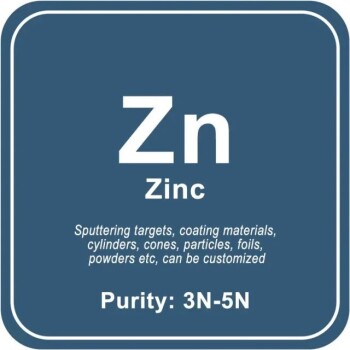
High Purity Zinc (Zn) Sputtering Target / Powder / Wire / Block / Granule
Find high-quality Zinc (Zn) materials for laboratory use at affordable prices. Our experts produce and customize materials of different purities, shapes, and sizes to suit your needs. Browse our range of sputtering targets, coating materials, and more.
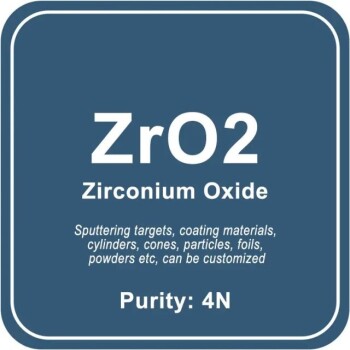
High Purity Zirconium Oxide (ZrO2) Sputtering Target / Powder / Wire / Block / Granule
Get high-quality Zirconium Oxide (ZrO2) materials tailored to your needs. We offer a variety of shapes and sizes, including sputtering targets, powders, and more, at affordable prices.

Zinc Sulfide (ZnS) Sputtering Target / Powder / Wire / Block / Granule
Get affordable Zinc Sulfide (ZnS) materials for your laboratory needs. We produce and customize ZnS materials of varying purities, shapes, and sizes. Choose from a wide range of sputtering targets, coating materials, powders, and more.
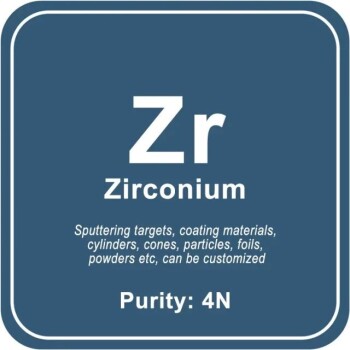
High Purity Zirconium (Zr) Sputtering Target / Powder / Wire / Block / Granule
Looking for high-quality Zirconium materials for your laboratory needs? Our range of affordable products includes sputtering targets, coatings, powders, and more, tailored to your unique requirements. Contact us today!

High Purity Aluminum-doped Zinc Oxide (AZO) Sputtering Target / Powder / Wire / Block / Granule
Looking for high-quality AZO materials? Our lab-grade Aluminum-doped Zinc Oxide products are tailored to your exact specifications, including sputtering targets, powders, and more. Order now.
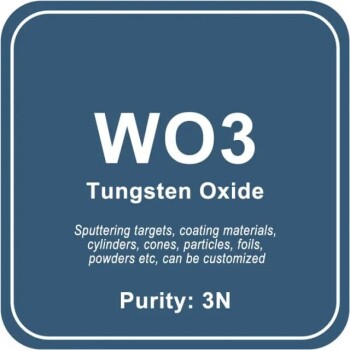
High Purity Tungsten Oxide (WO3) Sputtering Target / Powder / Wire / Block / Granule
Looking for high-quality Tungsten Oxide (WO3) materials? Our laboratory-grade products are tailored to your specific needs, with a range of purities, shapes, and sizes available. Shop sputtering targets, coating materials, and more.
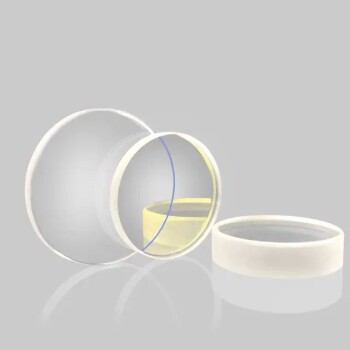
Optics Zinc Sulphide (ZnS) Windows have an excellent IR transmission range between 8-14 microns.Excellent mechanical strength and chemical inertness for harsh environments (harder than ZnSe Windows)

High Purity Chromium Oxide (Cr2O3) Sputtering Target / Powder / Wire / Block / Granule
Looking for high-quality Chromium Oxide materials for your lab? Our range includes sputtering targets, powders, foils, and more, customized to your needs. Shop now for reasonable prices.
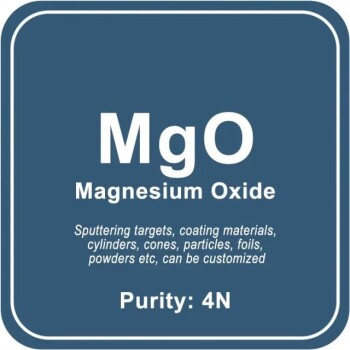
High Purity Magnesium Oxide (MgO) Sputtering Target / Powder / Wire / Block / Granule
Discover our range of Magnesium Oxide (MgO) materials tailored for laboratory use at affordable prices. We offer various shapes and sizes, including sputtering targets, coatings, powders, and more.
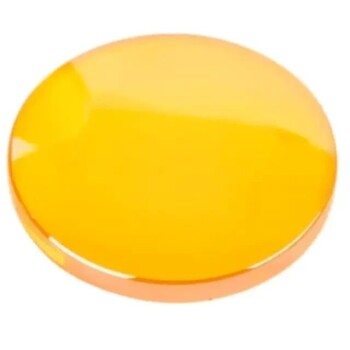
Zinc selenide(ZnSe) window / substrate / optical lens
Zinc selenide is formed by synthesizing zinc vapor with H2Se gas, resulting in sheet-like deposits on graphite susceptors.
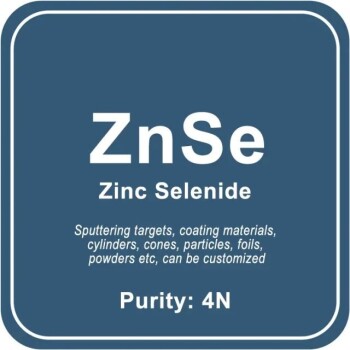
Zinc Selenide (ZnSe) Sputtering Target / Powder / Wire / Block / Granule
Looking for Zinc Selenide (ZnSe) materials for your laboratory? Our affordable prices and expertly tailored options make us the perfect choice. Explore our wide range of specifications and sizes today!

High Purity Bismuth Oxide (Bi2O3) Sputtering Target / Powder / Wire / Block / Granule
Get high-quality Bismuth Oxide (Bi2O3) materials for laboratory use at reasonable prices. Choose from a wide range of sizes and shapes to suit your unique needs. Order now!

Zirconia Ceramic Gasket - Insulating
Zirconia insulating ceramic gasket has high melting point, high resistivity, low thermal expansion coefficient and other properties, making it an important high temperature resistant material, ceramic insulating material and ceramic sunscreen material.
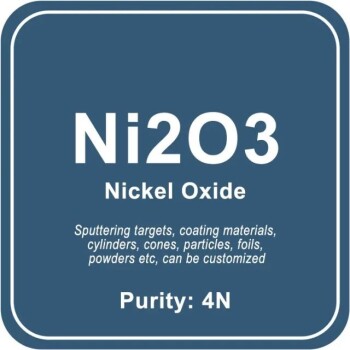
High Purity Nickel Oxide (Ni2O3) Sputtering Target / Powder / Wire / Block / Granule
Find high-quality Nickel Oxide materials for your laboratory needs at affordable prices. Our tailored solutions fit your specific requirements. Discover a range of shapes, sizes, and specifications for sputtering targets, coatings, powders, and more.

Zirconia Ceramic Plate - Yttria Stabilized Precision Machined
Yttrium-stabilized zirconia has the characteristics of high hardness and high temperature resistance, and has become an important material in the field of refractories and special ceramics.

There are very few harmful impurities in the chemical composition of zinc foil, and the surface of the product is straight and smooth; it has good comprehensive properties, processability, electroplating colorability, oxidation resistance and corrosion resistance, etc.
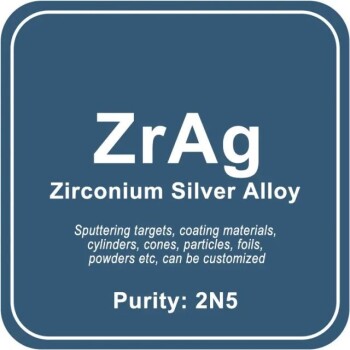
Zirconium Silver Alloy (ZrAg) Sputtering Target / Powder / Wire / Block / Granule
Discover affordable Zirconium Silver Alloy (ZrAg) materials for laboratory use. Our tailored solutions cater to your unique needs with varying purities, shapes, and sizes. Find sputtering targets, coatings, particles, powders, and more.
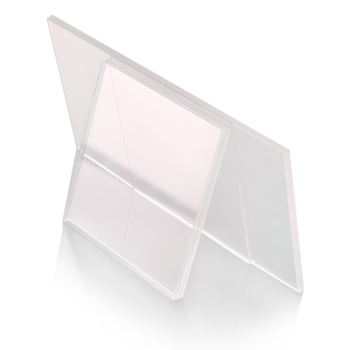
Optical quartz plate JGS1 / JGS2 / JGS3
The quartz plate is a transparent, durable, and versatile component widely used in various industries. Made from high-purity quartz crystal, it exhibits excellent thermal and chemical resistance.
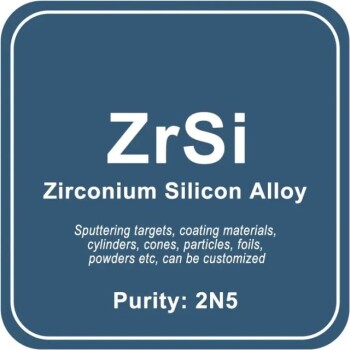
Zirconium Silicon Alloy (ZrSi) Sputtering Target / Powder / Wire / Block / Granule
Discover our Zirconium Silicon Alloy (ZrSi) materials for laboratory use at affordable prices. We produce tailored materials to fit your unique requirements, offering a wide range of specifications and sizes for sputtering targets, coating materials, powders, and more.
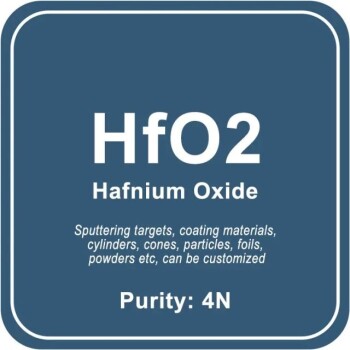
High Purity Hafnium Oxide (HfO2) Sputtering Target / Powder / Wire / Block / Granule
Get high-quality Hafnium Oxide (HfO2) materials for your laboratory needs at affordable prices. Our customized products come in various sizes and shapes, including sputtering targets, coatings, powders, and more.
Related Articles

Precautions for Preparing Lead Zirconate Titanate (PZT) Film Layers by Magnetron Sputtering
Guidelines and precautions for preparing PZT film layers using magnetron sputtering.

Target Material Sparking During Magnetron Sputtering Coating: Causes and Solutions
Explains why target material sparks during magnetron sputtering and offers solutions to prevent it.